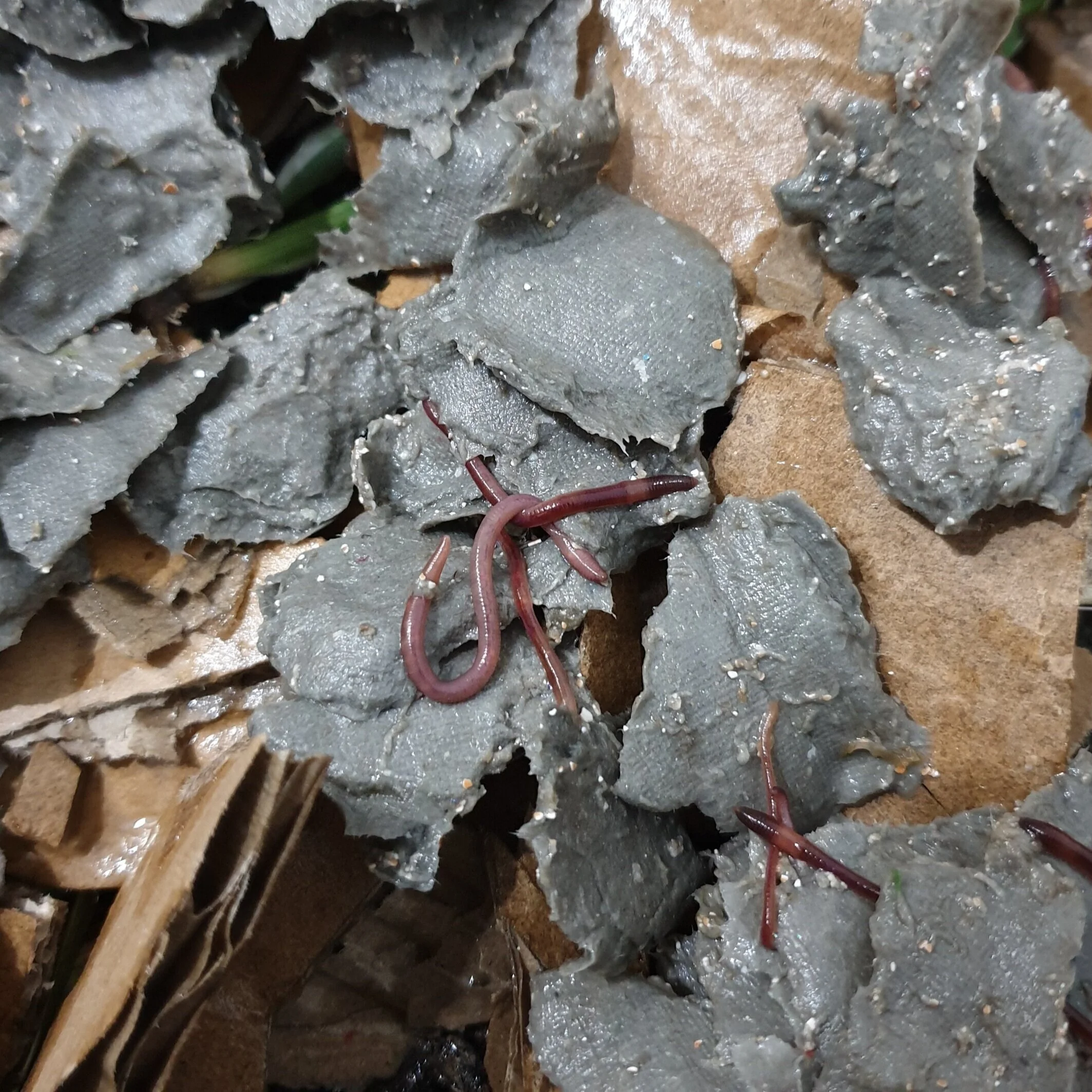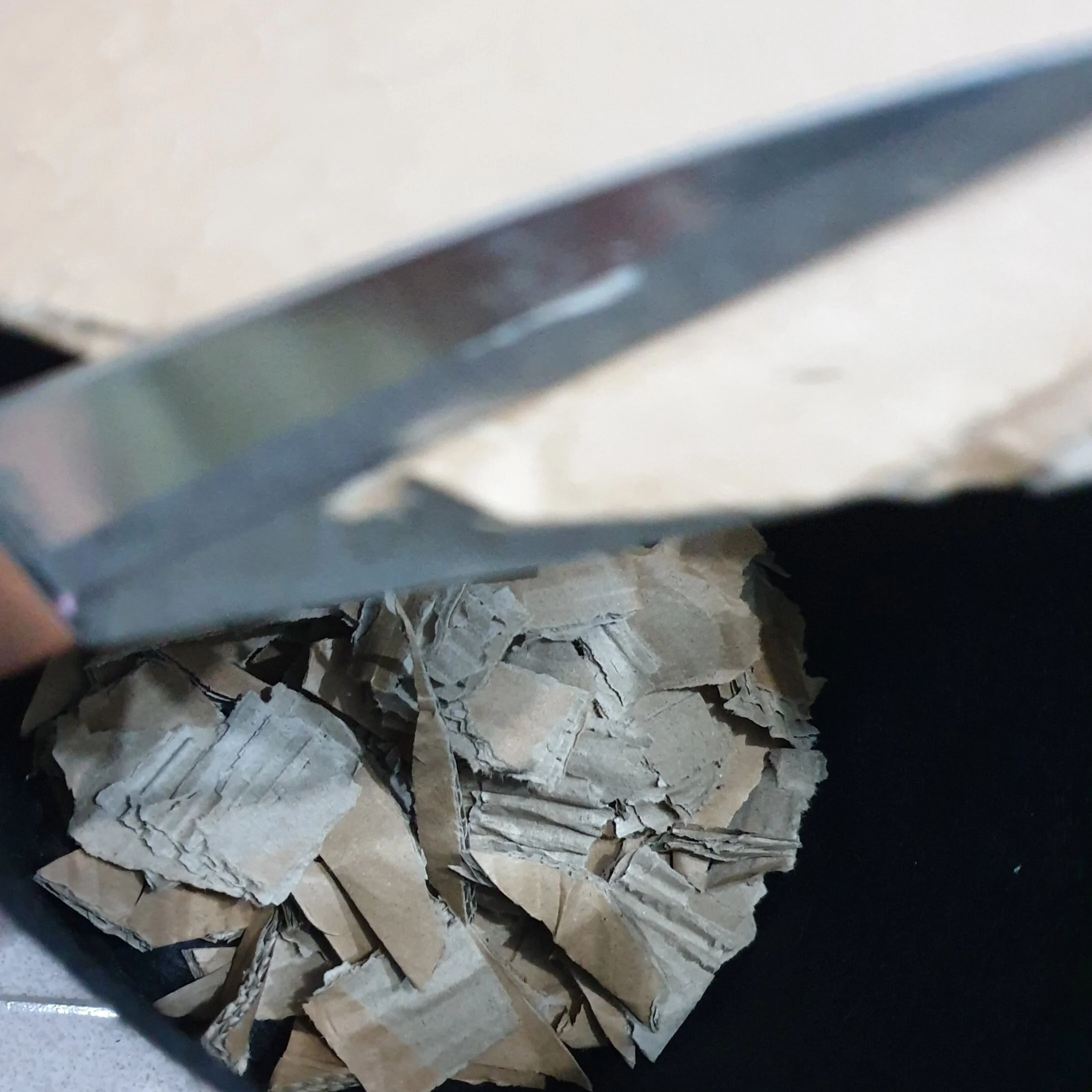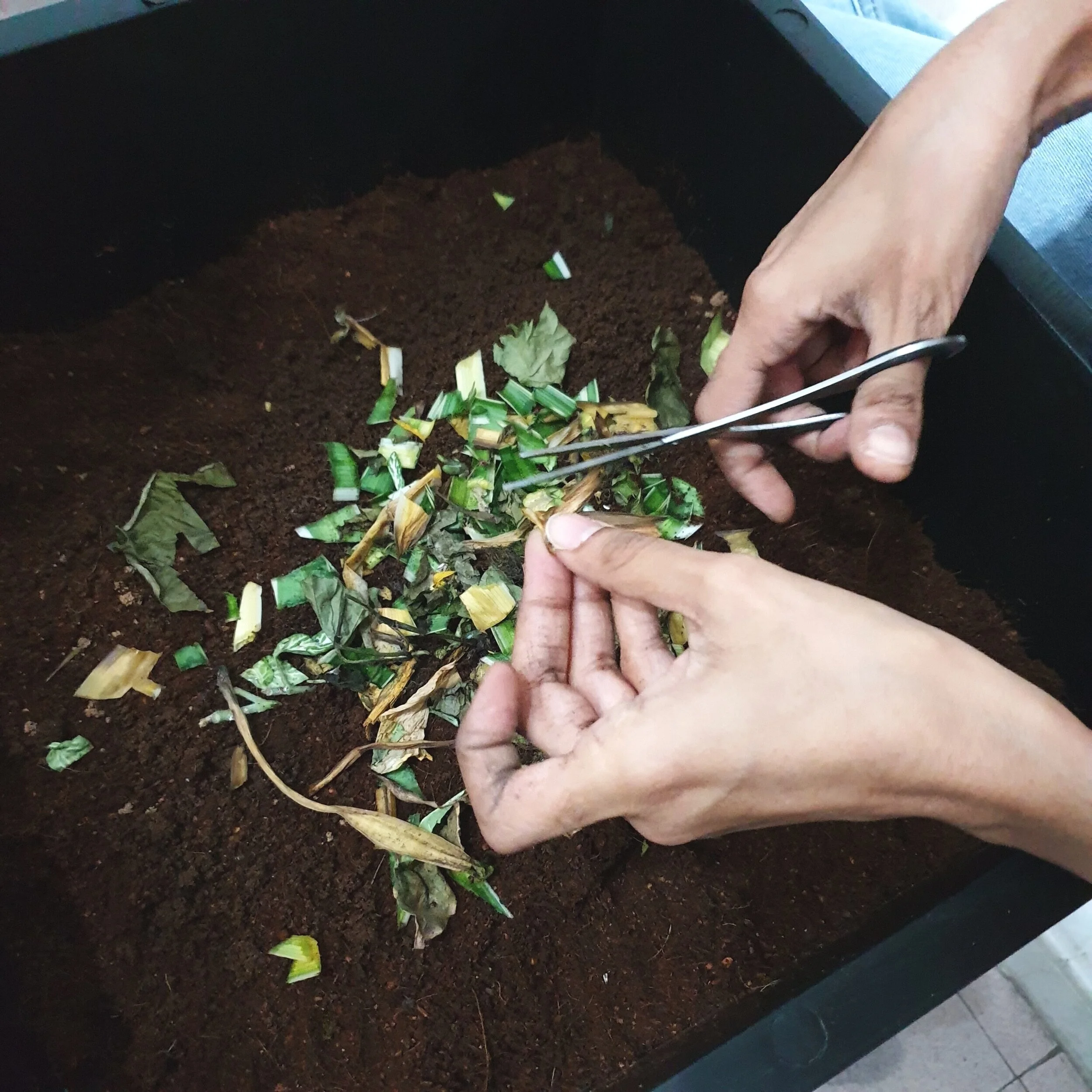Vermicomposting in a HDB flat (Singapore)
When my husband and I first moved into our new apartment here in Singapore, we were looking at ways to build eco-friendly and sustainable habits right from the start. We were looking at different ways our food waste could be reduced and composted, as here in Singapore, there are no local compost facilities available for us to drop our waste at. The only option was to set up a compost bin right here in our apartment. After researching through the various composting methods, we found vermicomposting was the best method that suited our needs.
Benefits of Vermicomposting
They breakdown waste in only 2 weeks and the compost pile can be collected approximately every 2-3 months.
The bin does not stink. If maintained properly it should smell like wet soil.
Very little maintenance is required to keep the worms happy. This means we spent very little time on them each week.
The worm castings are black gold. Our plants thrive in this stuff!
Bonus; The worms are adorable!!
Our Vermicompost Bin
We watched many videos on making our own vermicomposting bin. In the end, when we calculated the price of all the materials and tools needed to make the bin it amounted to the price of the bin that was on sale. So we just bought it from lazada instead. If you happen to have the tools and materials definitely consider making your own.
The first 2 layers of the bin were for waste and worms, the 3rd layer was for worm castings (the final product), and the 4th layer was for any excess water that drains through.
The 3rd layer we found practically useless as only about a tablespoon of worm castings fell through even though there were lot more to harvest. I suggest using the 3rd layer for more waste and worms. The layer also comes with a thin sheet to lay on the bottom so the worm castings wont fall through to the 4th layer. I will talk more about how we harvest the worm castings in an upcoming post.
The 4th layer was extremely useful in collecting excess water. Excess water can lead to the death of worms, thus, in addition to the water being useful to pour into plants to fertilise, it was also essential in keeping the bin healthy.
Throughout the bin there were also tiny holes to allow airflow while keeping pests out. Please note to check if your bin is meant for vermicomposting before purchasing as regular compost bins will typically have no holes.
Another downfall of this product is that it comes only in black. Ideally lighter coloured bins are preferred as it absorbs less heat and prevents the worms from toasting! We combat this by placing our bin in a shaded area.
Where to Place your Vermicompost Bin
Remember to keep your bin in a cool, dry, and shaded area in your house.
Most composting worms like temperatures similar to us. Make sure to keep the bin out of direct sunlight and in a cooler area to prevent them from overheating. Especially here in Singapore where the sun and humidity is brutal, this is vital. If your bin is a darker colour, keep in mind it gets heated faster and thus if provided an option, choose a lighter coloured bin. Damp bedding also allows to cool the temperature in the bin.
The area your bin is kept in should be well ventilated to keep the air flowing. Remember your worms are living things that need to breathe! Rooms without windows are not recommended to keep the bin in. At the same time keep away from direct windows to prevent rain water from affecting it.
Bedding for your Vermicompost Bin
It is important to provide your worms bedding. It acts both as a protective house and a food source. When first setting up your bin, the bedding should lay at the bottom 3-5 inches of your bin (or at the bottom of each layer of your bin if you have multiple layers). Worm bedding also acts as a food source as 50% of the worms’ diet consists of carbon rich items.
Composting worms like to live in moist, airy, carbon rich bedding. It should be odorless, PH neutral, free from chemicals and provide shade from light. Remember to damp your bedding before adding it into the bin. If you squeeze the bedding and water drips, you have added too much water, so remember to not wet it excessively.
Bedding also deters bugs. Make sure your food scraps are covered completely by the bedding to aid with this.
Some examples of bedding can be:
Brown cardboard cut into pieces and make sure to remove any plastic tape
Shredded Paper which is not bleached (like white paper) and does not contain ink
Shredded Newspaper as long as the ink is bio-degradable and non-toxic (I have never used this in my bin as I am not sure what type of ink the local newspapers use. When in doubt leave it out!)
Egg cartons
Aged compost
Coco coir or coco fiber
Peat moss
Straw and hay (make sure it is not sharp)
Dried leaves or garden waste (make sure it is not sharp)
Food Waste for your Vermicompost Bin
Your bin should always consist of more carbon (bedding) than nitrogen (waste). Every time you add in waste, remember to add some in carbon as well in order to keep the balance in the bin. Cutting your waste into smaller pieces can also quicken the composting process.
As worms are living beings there are some things that harm them and are absolutely toxic to them!
Do not feed!
Meat, eggs (eggshells are okay), and bones
Dairy, cheeses
Oily food
Spicy food
Onions, garlic, chilli
Canned sauces or processed food
Citrus like lemon, oranges, or grapefruit
Poisonous plant waste
Plastic or any non- biodegradable items
Aerating your Bin
It is important to allow air flow through your bin from time to time in order to help your worms breathe and keep the bin healthy. I like to gently flip the top layer each time I add waste and bedding, making sure to top it off with a layer of more bedding to discourage bugs. I do a deeper flip once in a week or two. If regular aeration is done and you still experience an odor from the bin, the acidity is probably too high. Add in more bedding and eggshells to help reduce the acidity.
Conclusion
I hope this article is informative and inspires everyone to try out vermicomposting in your own apartments. Although it seemed like it was intimidating at the start, with trying so hard to find a bin, worms, and the right information to not kill my worms, it was all worth it and now is a breeze to maintain! Feel free to write to me if any of you have any questions on your set-up. Happy composting everyone!




